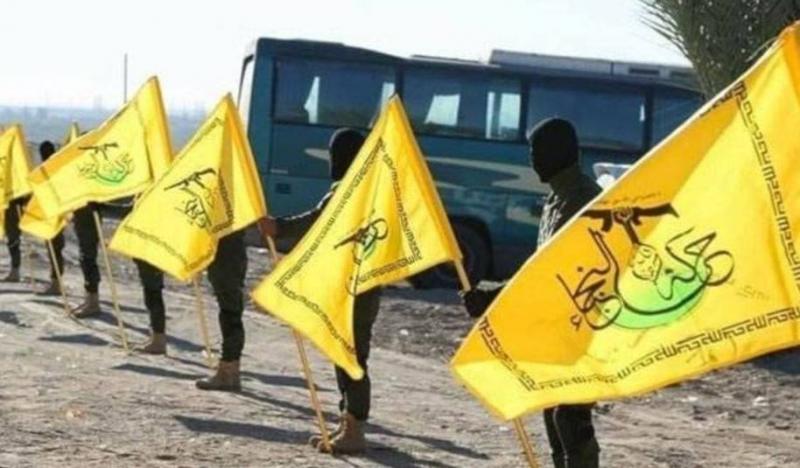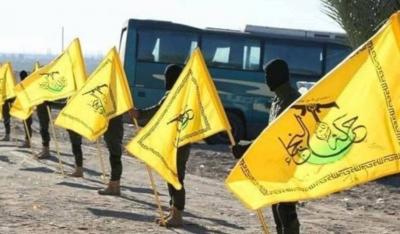Iraqi militias, commissioned by the Iranian Revolutionary Guard, managed to secure the entry of weapons shipments into eastern Deir Ezzor through illegal crossings. This coincided with a threat issued by the Iraqi "Nujaba" movement to respond to Israel after an attack on one of its facilities in the Sayyida Zainab area south of Damascus last Thursday. The militia "Hezbollah" from Iraq, allied with the Iranian Revolutionary Guard and the Iranian Quds Force, oversaw the entry of the weapon shipments via trucks that came through the Iranian crossing known as "the railway crossing," used for smuggling Iranian weapons into Syria and Lebanon.
The weapon shipments included drones of various types and a number of surface-to-surface missiles, according to the local opposition network "Ain Al-Furat." The weapons were sent directly upon arrival to the Al-Bukamal area, specifically to the Iranian compound in the town of Al-Salihiyah, located between the towns of Mayadeen and Al-Bukamal, which contains the largest security compound in eastern Deir Ezzor countryside, housing heavy military vehicles, large weapon warehouses, and dozens of personnel from both foreign and local nationalities, supervised by a Lebanese commander known as "Abu Rabea."
The town of Al-Salihiyah is considered one of the main centers used by the militias linked to the Iranian Revolutionary Guard, especially the Iraqi Hezbollah and the Lebanese Hezbollah, to launch reconnaissance and suicide drones and missiles towards areas east of the Euphrates. The entry of the weapon shipments to Al-Salihiyah coincided with Israeli airstrikes on Thursday morning that targeted the cultural center of the Iranian-aligned Iraqi "Nujaba" movement in the Sayyida Zainab area south of Damascus and a training camp belonging to the movement, according to the Syrian Observatory for Human Rights. Other opposing media sources revealed that the Israeli strikes targeted the "communication office" of the "Nujaba" movement.
The Observatory noted that "this Israeli targeting of the militias is the third" in the current month of May. The "Nujaba" movement vowed a "severe response" to Israel, stating in a statement that "the Zionist entity has gone too far in its tyranny, brutality, and arrogance, targeting the building of culture and media that exposed their atrocities and crimes against humanity," adding that "in this targeting, the narrative of culture and peace perpetuated by the West has been revealed as an exposed lie." The militia warned that its response would be "unexpected, strong, and impactful," indicating that "the enemy knows that when we say we will act, we will, and our drones have inflicted severe pain upon them, and they know where our missiles have reached, and these crimes will not go unpunished."
In the same context, pro-social media accounts reported the deaths of two Syrian soldiers in the strike on the cultural and media center of the "Nujaba" movement in Sayyida Zainab, Damascus countryside. The accounts mentioned that Lieutenant Ahmad Adnan Shaqra from the town of Jisrin in Damascus countryside and Lieutenant Hassan Kamal Hassan from the town of Marj Sultān, also in Damascus countryside, were killed in the Israeli airstrike.
Additionally, the entry of the weapon shipments into Al-Salihiyah coincided with leaked information about a security meeting held by the Iranian Revolutionary Guard leaders in the city of Mayadeen, eastern Deir Ezzor, involving several high-ranking leaders of Iranian militias. The meeting, held in the Iranian hospital in Mayadeen, included the UAV operations officer in both the Iraqi and Lebanese Hezbollah militias, known as "Haj Maysar," the area commander in Mayadeen named "Haj Siraj," and "Haj Abu Al-Fadl," both first-tier leaders in the Mayadeen sector.
This meeting is considered the first of its kind held inside the "Al-Shifa" field hospital of the Iranian Revolutionary Guard, which confirms, according to "Ain Al-Furat," that the militia leaders are avoiding using their headquarters for meetings and opting for civilian or service locations to avoid potential airstrikes. The previous source added that leaks regarding the meeting revealed the Iranian militias' intention to intensify reconnaissance and monitoring operations in the eastern Euphrates area by launching small UAVs at different times to prevent their detection and destruction, aiming to provide their cells with locations for possible strikes.
Since the beginning of the year, the Syrian Observatory has recorded 38 instances of Israeli strikes targeting Syrian territories, 26 of which were airborne and 12 ground-based, resulting in damage and destruction of around 75 targets, including weapon and ammunition depots, headquarters, centers, and vehicles, and causing the deaths of 130 individuals, including 21 Iranian members of the Revolutionary Guard.




